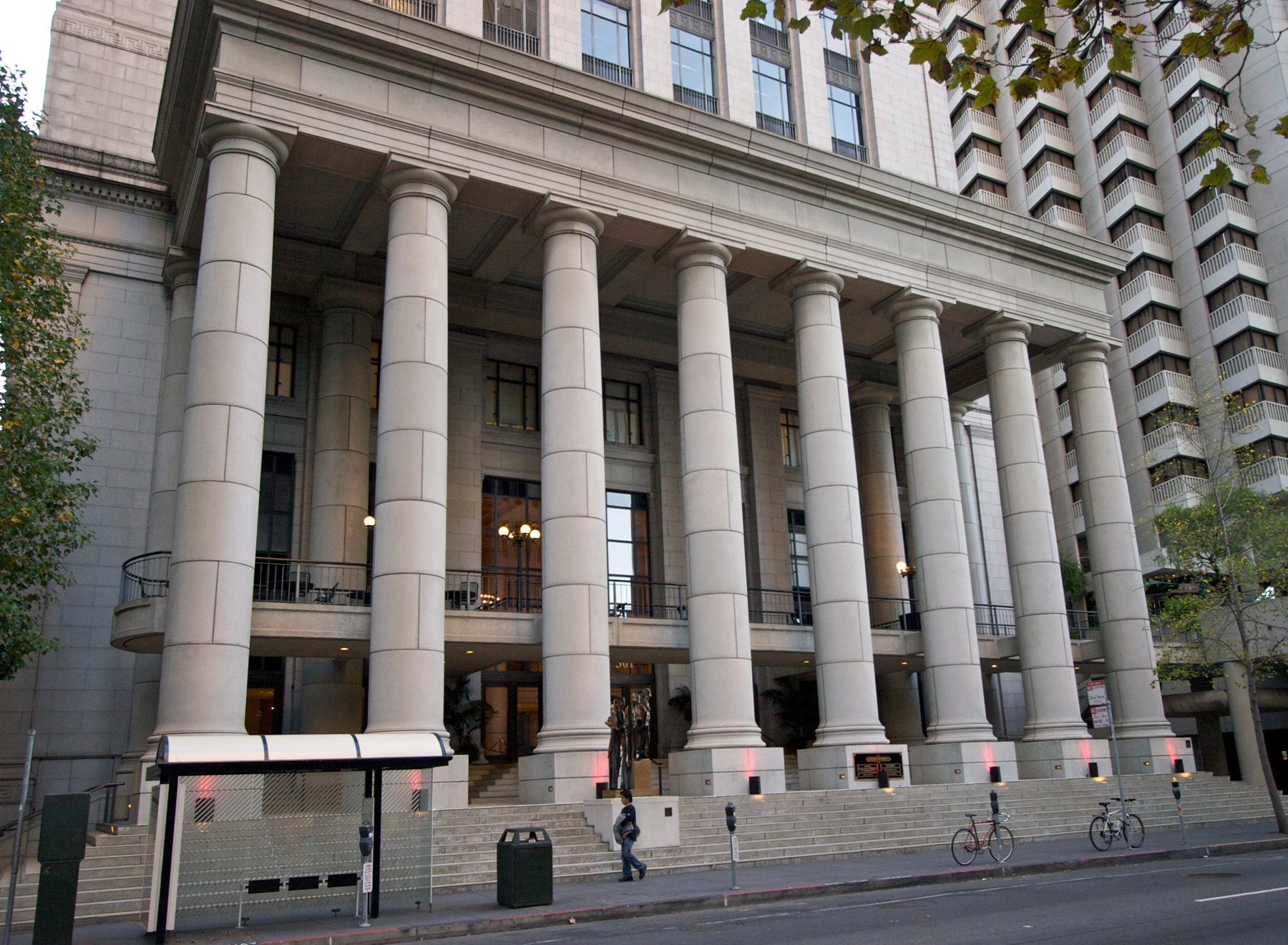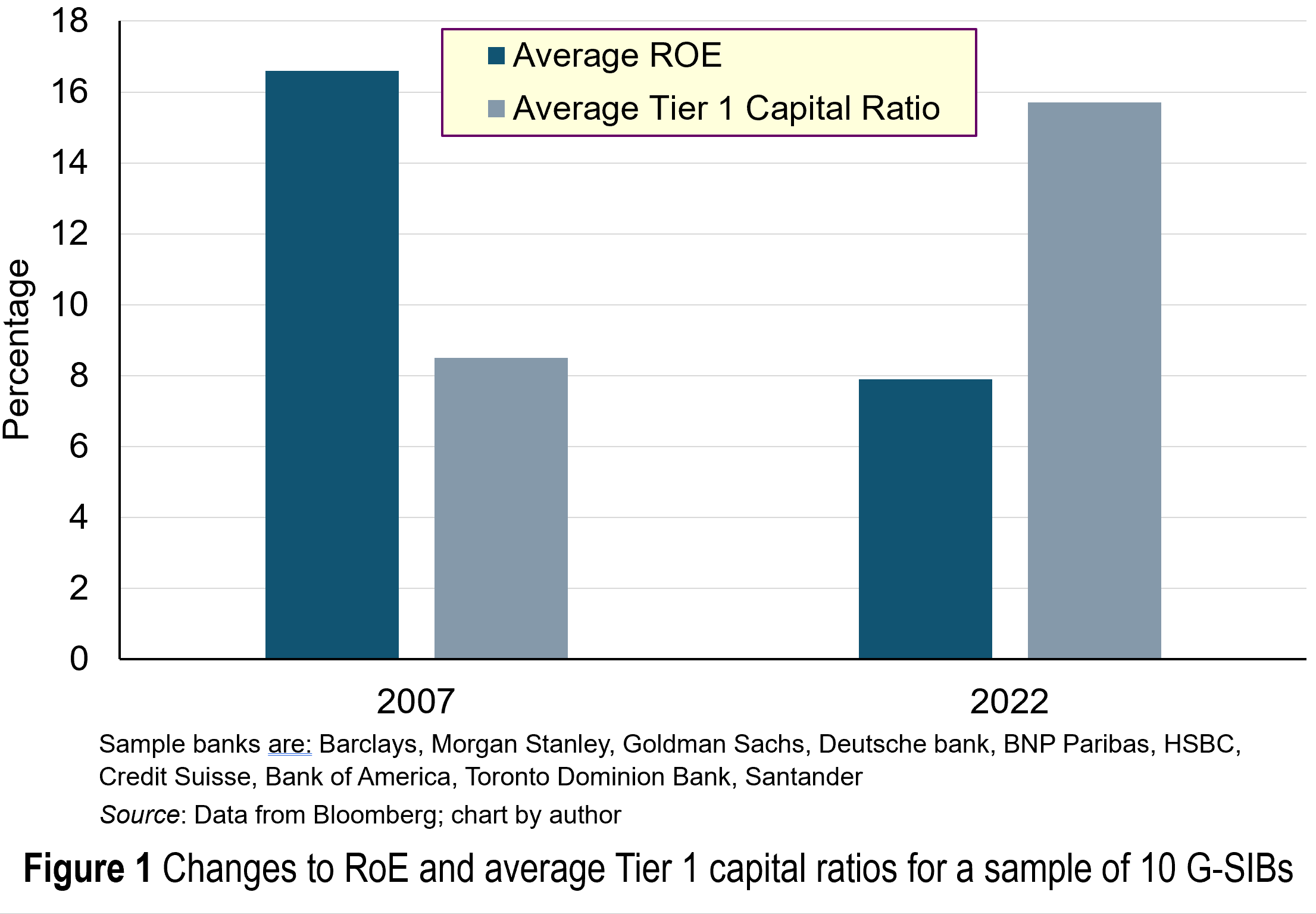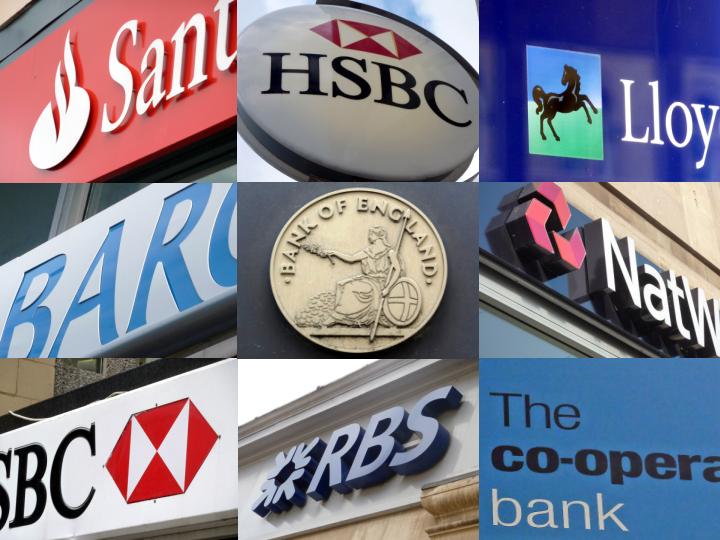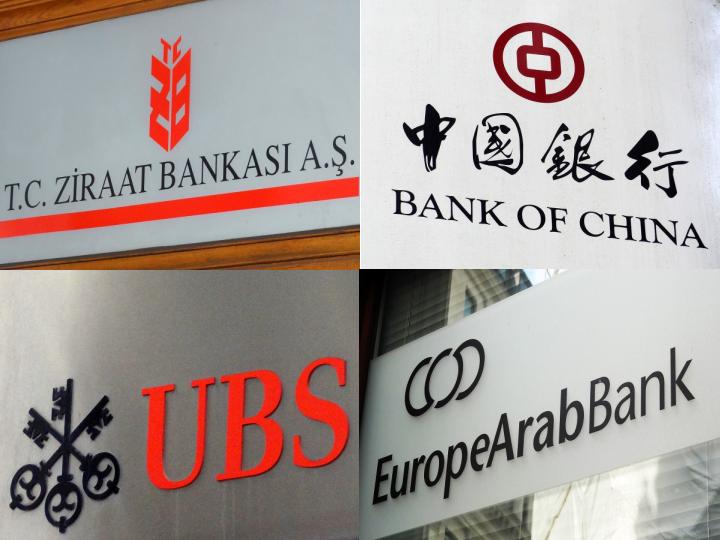 Recently, US regulators have decided not to impose further increases in capital requirements on US large and mid-sized banks. The increased requirements, proposed in late 2023, would have been stricter than required under the Bank for International Settlements’ Basel framework1 and provoked a fierce backlash, involving public statements by senior bank executives, aggressive lobbying and extensive media campaigns, including an ad-spot during the Superbowl.
Recently, US regulators have decided not to impose further increases in capital requirements on US large and mid-sized banks. The increased requirements, proposed in late 2023, would have been stricter than required under the Bank for International Settlements’ Basel framework1 and provoked a fierce backlash, involving public statements by senior bank executives, aggressive lobbying and extensive media campaigns, including an ad-spot during the Superbowl.
Following bank insolvencies in the USA during 2023, such as Silicon Valley Bank (SVB) and First Republic, which required bailouts from US banking authorities, many commentators argued that the failures were caused by the institutions having insufficient capital to cover losses on their portfolios of US Treasuries. The implication was that banks, particularly mid-sized ones (which were exempt from the Basel framework), needed to have more capital.
US regulators duly responded by proposing what was officially known as ‘the finalisation of Basel III’, but was commonly referred to as ‘the Basel Endgame’. The proposed system-wide reforms involved more conservative calculations of the risk-weighted value of assets such as mortgages, corporate loans and loans to other financial institutions. Further, the proposals also sought to subject banks with $100bn to $250bn of assets to Basel capital adequacy requirements for the first time. Previously they applied only to banks with over $250bn of assets.
 The issue focused attention on the capital banks hold to protect against insolvency and provoked discussion about how much of a capital buffer these institutions should have.
The issue focused attention on the capital banks hold to protect against insolvency and provoked discussion about how much of a capital buffer these institutions should have.
Critics argued the changes would lead to significant increases in the capital required to be held by all US banks compared to international rivals and have an adverse effect on their profitability and international competitiveness. Further, critics pointed out that problems at SVB and First Republic were down to confidence issues and it was argued that more capital would not have saved those institutions from insolvency.
This blog examines these issues. It analyses the role of capital in banks and discusses the trade-off that banks face between profitability and security in their activities which underpinned their resistance to the proposed increases. I will also discuss the other trade-off that banks face – between liquidity and profitability – and how liquidity is just as important an influence on bank’s survival in times of crisis.
The role of capital in banks
 As with any limited company, a bank’s capital is the difference between total assets and its liabilities. It is the funding provided by long-term investors. These are primarily shareholders, but also long-term debtholders. Bank capital acts as a buffer to prevent insolvency. Capital represents the amount that the value of assets have to fall before the bank is insolvent (value of assets is below liabilities). Higher capital provides a greater buffer. Lower capital provides a smaller buffer.
As with any limited company, a bank’s capital is the difference between total assets and its liabilities. It is the funding provided by long-term investors. These are primarily shareholders, but also long-term debtholders. Bank capital acts as a buffer to prevent insolvency. Capital represents the amount that the value of assets have to fall before the bank is insolvent (value of assets is below liabilities). Higher capital provides a greater buffer. Lower capital provides a smaller buffer.
Capital is uniquely important for commercial banks compared to non-financial companies because of the nature of the assets banks hold – financial securities and loans. Banks are susceptible to losses from financial securities and ‘bad debts’, which are directly reflected in the value of their capital. Further, unlike non-financial companies, the failure of a bank has a significantly negative impact on wider economic activity.
The trade-off between profitability and security
As limited companies, banks face a trade-off between profitability and security in lending. The more profitable a loan, the more risky (less secure) it is likely to be. This creates the potential for the interests of deposit holders and regulators on the one hand and bank executives and shareholders on the other to diverge.
Depositors place their funds with banks and will want the bank to be secure, holding lots of capital to prevent insolvency. However, bank executives and shareholders have a strong incentive to lower the capital buffer, particularly equity, because it produces a higher return for shareholders.
Let’s analyse the implications of different capital buffers on profitability and return, particularly the return to shareholders. A performance measure used to analyse the return to shareholders is Return on Equity (RoE) – the amount of profit each pound of equity capital generates, expressed as a percentage. It is calculated by dividing net profit by equity capital and multiplying by 100.

If a bank has a net profit of £1m and holds £10m of equity capital, the RoE is:

If it has a net profit of £1m and holds £5m of equity capital, the RoE is:

In the first case, the capital buffer generates a 10 per cent RoE. In the second case, the lower capital buffer generates a higher RoE of 20 per cent. This provides a simple illustration of the trade-off banks face. The lower the amount of capital they hold, the higher the return to shareholders but the lower capital buffer, which increases the risk of insolvency.
In different time periods, banks have held varying percentages of capital. For much of the 20th century, banks had capital ratios of around 20 per cent, generating a return on equity of between 5 and 10 per cent. Bank lending was restricted, with shareholders accepting a lower return on equity, while holding a higher amount of capital to cover potential losses from financial assets. Indeed, in the 19th century, banks typically held even more capital, amounting to about 50 per cent of their assets, making bank lending even more restricted.
However, starting from the 1960s, but accelerating during the 1980s, banks began to change their view of the trade-off between profitability and security. This coincided with the liberalisation of credit markets and a greater emphasis on ‘shareholder value’ in business. Average capital ratios fell from over 20 per cent in the 1960s to below 10 per cent in the early 2000s. The return on equity went in the opposite direction. In the 1960s, it was typically between 5 and 10 per cent; by the decade before the 2008 financial crisis it had risen to above 20 per cent. The trade-off had shifted in favour of profitability.
 However, the dangers of this shift were exposed during the 2008 financial crisis. The capital held by banks was very thin and not designed to cope with extremely stressful economic circumstances. Banks found they had insufficient capital to cover losses from big decreases in the value of their securitised debt instruments like CDOs (collateralised debt obligations) and struggled to raise additional capital from worried investors.
However, the dangers of this shift were exposed during the 2008 financial crisis. The capital held by banks was very thin and not designed to cope with extremely stressful economic circumstances. Banks found they had insufficient capital to cover losses from big decreases in the value of their securitised debt instruments like CDOs (collateralised debt obligations) and struggled to raise additional capital from worried investors.
After the crisis, the Bank of International Settlements (BIS) determined that banks needed to hold sufficient capital, not just to cope with the ebbs and flows of the business cycle but also as a buffer in the rare, yet extremely stressful, economic circumstances that might arise. Therefore, international bank regulations were redrafted under the auspices of the BIS’s Basel Committee. The third version of these regulations is known as ‘Basel III’. It was agreed in 2017, with the measures being phased in from 2022. Basel III significantly raised the capital buffers for large global banks, known as ‘globally systemically-important banks’ (G-SIBs) and the use of stress-tests to model the robustness of banks’ balance sheets to cope with severe economic pressures.
 Figure 1 shows the changes to the average return on equity (RoE) and average tier 1 capital ratios for a sample of 10 G-SIBs as a result of Basel III. By 2022, all the banks had capital buffers which were well above the minimum required under Basel III for tier 1 capital – 8.5 per cent. The trade-off was that banks’ average return on equity was much lower – around 8 per cent in 2022, compared to 16 per cent in 2007.
Figure 1 shows the changes to the average return on equity (RoE) and average tier 1 capital ratios for a sample of 10 G-SIBs as a result of Basel III. By 2022, all the banks had capital buffers which were well above the minimum required under Basel III for tier 1 capital – 8.5 per cent. The trade-off was that banks’ average return on equity was much lower – around 8 per cent in 2022, compared to 16 per cent in 2007.
How much capital is enough capital?
Ever since the Basel III agreement, there had been discussions around tightening capital requirements further but no agreement had been reached. One aspect of Basel III was that increased capital was only required of the largest banks. Mid-sized and smaller banks, which are a significant part of the US market, were exempt. The failures of the mid-sized US Silicon Valley Bank (SVB) and First Republic Bank provoked unilateral proposals by the US authorities through the ‘Basel Endgame’. This would raise capital requirements for large banks and extend capital requirements to mid-sized institutions.
But large US banks resisted these proposals, arguing that the authorities were pushing the trade-off too far in favour of security, attempting to make banks very safe but offering a poor return for investors and decreasing the amount of lending banks would conduct.
The furore raises the question as to what is an adequate amount of capital. One reference point is non-financial institutions. These typically hold much more capital relative to the value of total assets – in the range from 30 per cent to 40 per cent. If banks had capital ratios at that level, or even higher, they would be perceived as extremely safe, but might not offer much return to shareholders, impinging on the ability of banks to raise additional capital when they needed it.
Further, other critics argue that there is too much emphasis placed on capital adequacy. Focusing on capital ignores the other significant trade-off banks face in their activities – between liquidity and profitability. Indeed, recent bank failures were not due to insufficient capital but other problems relating to the management of the institution, which led to a loss of confidence by not only by investors, but primarily, deposit-holders.
The other trade-off: liquidity and profitability
 While banks have to be solvent, they have to manage their trade-off between liquidity and profitability carefully too. A commercial bank’s basic business model involves maturity transformation – transforming liquid deposits into illiquid assets, such as government bonds and loans, to generate profit. This requires balancing the desire for profitability with the liquidity needs of depositors. If banks get it wrong, then it can lead to a loss of confidence and a ‘run’ on deposits. This is what happened to both Silicon Valley Bank (SVB) and Credit Suisse. The failures of both institutions were not due to insufficient capital but poor liquidity management, which eventually caused a loss of confidence.
While banks have to be solvent, they have to manage their trade-off between liquidity and profitability carefully too. A commercial bank’s basic business model involves maturity transformation – transforming liquid deposits into illiquid assets, such as government bonds and loans, to generate profit. This requires balancing the desire for profitability with the liquidity needs of depositors. If banks get it wrong, then it can lead to a loss of confidence and a ‘run’ on deposits. This is what happened to both Silicon Valley Bank (SVB) and Credit Suisse. The failures of both institutions were not due to insufficient capital but poor liquidity management, which eventually caused a loss of confidence.
Silicon Valley Bank (SVB) demonstrated poor liquidity management, involving a narrow depositor base which was very responsive to changes in interest rates, and an illiquid asset portfolio. During the coronavirus pandemic, tech start-ups received substantial venture capital funding and deposited it with SVB. SVB did not have the capacity or inclination to lend all of the extensive deposits which they were receiving. Instead, the management decided to invest in long-term fixed rate government debt securities. Such securities represented 56 per cent of SVB’s assets in 2020.
Since SVB’s depositors were businesses, unlike retail depositors they were more sensitive to changing interest rates. As rates rose, businesses moved their funds out in search of higher rates, creating a liquidity problem for SVB. The bank was forced to sell $21bn of its long-dated bonds to provide liquidity. However, it endured losses when it sold the bonds as bond prices had fallen, reflecting higher interest rates. Therefore, it needed to raise capital to replace the losses from those sales.
Investors baulked at this, however, particularly when they observed the accelerating deposit outflows. It was the ‘run’ on deposits that was the problem ($42 billion on 8 March 2023 alone), not the unrealised losses on government bonds relative to capital. It was only when the losses were realised that the problem arose. Indeed, Bank of America was in a similar situation with a substantial portfolio of long-term government debt. However, it did not have to realise its ‘paper losses’ since its deposits were more ‘sticky’.
 Once confidence is lost and there is a run on deposits, even a bank which has a capital buffer deemed to be more than sufficient is doomed to fail. Take Credit Suisse. It was subject to the Basel framework and had capital ratios similar to its ultimate acquirer UBS. However, it had a risky business culture that pushed the trade-off too much towards profitability. This led to repeated scandals, fines and losses, which caused investors to lose confidence in the institution.
Once confidence is lost and there is a run on deposits, even a bank which has a capital buffer deemed to be more than sufficient is doomed to fail. Take Credit Suisse. It was subject to the Basel framework and had capital ratios similar to its ultimate acquirer UBS. However, it had a risky business culture that pushed the trade-off too much towards profitability. This led to repeated scandals, fines and losses, which caused investors to lose confidence in the institution.
But, once again, it was not the financial losses that was the problem. It was the loss of confidence by depositors. The institution suffered deposit withdrawals of CHF 67 billion in the first three months of 2023. Attempts to stem the outflow with a ‘liquidity backstop’ provided by the Swiss National Bank on 15 March 2023 failed to reassure investors and depositors. Instead, the bank run intensified, with daily withdrawals of demand deposits topping CHF 10bn in the week afterwards. Credit Suisse failed and the Swiss banking regulators quickly forced its acquisition by UBS.
Conclusion
Bank capital is important. After the financial crisis, banks needed to redress the trade-off between profitability and security in lending. However, while the US authorities desire to improve the security of their banking system is laudable, the focus on capital is misplaced. Ever-increasing capital is not the solution to every banking crisis.
Ultimately, banks depend on confidence. Once that confidence is lost, there is little an institution can do to prevent failure. More emphasis needs to be placed on better management of assets and liabilities to maintain sufficient profitability, while at the same time being both liquid and secure. This will maintain confidence, not only by investors, but particularly by deposit-holders.
1 See Economics 11e, section 18.2; Economics for Business 9e, section 28.2; Essentials of Economics 9e, section 11.2.
Articles
- Basel III: The US has started a race to the bottom
Financial Times, Daniel Davies (14/9/24)
- Basel III: What It Is, Capital Requirements, and Implementation
Investopedia, Peter Gratton (22/6/24)
- BofA: dumb, or just unlucky?
Financial Times, Robert Armstrong (30/6/24)
- Why America’s banks need more capital
The Economist (19/10/23)
- The Fed gets ratioed, bank capital edition
Financial Times, Steven Kelly (31/8/23)
- The US pushback against ‘Basel Endgame’
Financial Times, Laura Noonan, Claire Jones and Joshua Franklin (19/3/24)
- SVB is not a canary in the banking gold mine
Financial Times, Robert Armstrong (10/3/23)
- Basel Endgame stumbles at the finish line
The Banker, Farah Khalique (16/7/24)
- Why did Silicon Valley Bank fail?
Economics Observatory, John Turner (17/3/23)
- Why did Credit Suisse fail and what does it mean for banking regulation?
Economics Observatory, Rebecca Stuart (13/4/23)
Video
Blog
Information
Questions
- Explain the role of capital for a commercial bank.
- Research the ‘Basel Endgame’ proposals. Why would US regulators want banks to hold more capital?
- Explain the trade-off between profitability and security that banks face.
- Explain the trade-off between profitability and liquidity that banks face.
- Research Silicon Valley Bank’s failure and trace the ‘run’ on deposits in the bank. Explain why investors baulked at injecting more capital.
- Research Credit Suisse’s demise and trace the ‘run’ on deposits in that bank. Explain why investors baulked at injecting more capital.
 Growth in the eurozone has slowed. The European Central Bank (ECB) now expects it to be 1.1% this year; in December, it had forecast a rate of 1.7% for 2019. Mario Draghi, president of the ECB, in his press conference, said that ‘the weakening in economic data points to a sizeable moderation in the pace of the economic expansion that will extend into the current year’. Faced with a slowing eurozone economy, the ECB has announced further measures to stimulate economic growth.
Growth in the eurozone has slowed. The European Central Bank (ECB) now expects it to be 1.1% this year; in December, it had forecast a rate of 1.7% for 2019. Mario Draghi, president of the ECB, in his press conference, said that ‘the weakening in economic data points to a sizeable moderation in the pace of the economic expansion that will extend into the current year’. Faced with a slowing eurozone economy, the ECB has announced further measures to stimulate economic growth.
First it has indicated that interest rates will not rise until next year at the earliest ‘and in any case for as long as necessary to ensure the continued sustained convergence of inflation to levels that are below, but close to, 2% over the medium term’. The ECB currently expects HIPC inflation to be 1.2% in 2019. It was expected to raise interest rates later this year – probably by the end of the summer. The ECB’s main refinancing interest rate, at which it provides liquidity to banks, has been zero since March 2016, and so there was no scope for lowering it.
 Second, although quantitative easing (the asset purchase programme) is coming to an end, there will be no ‘quantitative tightening’. Instead, the ECB will purchase additional assets to replace any assets that mature, thereby leaving the stock of assets held the same. This would continue ‘for an extended period of time past the date when we start raising the key ECB interest rates, and in any case for as long as necessary to maintain favourable liquidity conditions and an ample degree of monetary accommodation’.
Second, although quantitative easing (the asset purchase programme) is coming to an end, there will be no ‘quantitative tightening’. Instead, the ECB will purchase additional assets to replace any assets that mature, thereby leaving the stock of assets held the same. This would continue ‘for an extended period of time past the date when we start raising the key ECB interest rates, and in any case for as long as necessary to maintain favourable liquidity conditions and an ample degree of monetary accommodation’.
Third, the ECB is launching a new series of ‘quarterly targeted longer-term refinancing operations (TLTRO-III), starting in September 2019 and ending in March 2021, each with a maturity of two years’. These are low-interest loans to banks in the eurozone for use for specific lending to businesses and households (other than for mortgages) at below-market rates. Banks will be able to borrow up to 30% of their eligible assets (yet to be fully defined). These, as their acronym suggests, are the third round of such loans. The second round was relatively successful. As the Barron’s article linked below states:
Banks boosted their long-term borrowing from the ECB by 70% over the course of the program, although they did not manage to increase their holdings of business loans until after TLTRO II had finished disbursing funds in March 2017.
Whether these measures will be enough to raise growth rates in the eurozone depends on a range of external factors affecting aggregate demand. Draghi identified three factors which could have a negative effect.
- Brexit. The forecasts assume an orderly Brexit in accordance with the withdrawal deal agreed between the European Commission and the UK government. With the House of Commons having rejected this deal twice, even though it has agreed that there should not be a ‘no-deal Brexit’, this might happen as it is the legal default position. This could have a negative effect on the eurozone economy (as well as a significant one on the UK economy). Even an extension of Article 50 could create uncertainty, which would also have a negative effect
- Trade wars. If President Trump persists with his protectionist policy, this will have a negative effect on growth in the eurozone and elsewhere.
- China. Chinese growth has slowed and this dampens global growth. What is more, China is a major trading partner of the eurozone countries and hence slowing Chinese growth impacts on the eurozone through the international trade multiplier. The ECB has taken this into account, but if Chinese growth slows more than anticipated, this will further push down eurozone growth.
Then there are internal uncertainties in the eurozone, such as the political and economic uncertainty in Italy, which in December 2018 entered a recession (2 quarters of negative economic growth). Its budget deficit is rising and this is creating conflict with the European Commission. Also, there are likely to be growing tensions within Italy as the government raises taxes.
Faced with these and other uncertainties, the measures announced by Mario Draghi may turn out not to be enough. Perhaps in a few months’ there may have to be a further round of quantitative easing.
Articles
- ECB statement following policy meeting
Reuters, Larry King (7/3/19)
- European Central Bank acts to boost struggling eurozone
BBC News, Andrew Walker (7/3/19)
- The European Central Bank Tries to Avoid Repeating Past Mistakes
Barron’s, Matthew C. Klein (8/3/19)
- ECB pushes back rate hike plans, announces fresh funding for banks
CNBC, Silvia Amaro (7/3/19)
- Why the ECB Followed the Fed’s Flip-Flopping
Bloomberg, Mohamed A. El-Erian (7/3/19)
- Central Banks Don’t Have the Answer and Markets Know It
Bloomberg, Robert Burgess (7/3/19)
- Missing out on monetary normalisation
OMFIF, David Marsh (12/4/19)
- The ECB is attempting to get ahead of event
Financial Times, The editorial board (8/3/19)
- Explainer: What is the fuss about European Central Bank TLTRO loans?
Reuters, Balazs Koranyi (4/3/19)
Videos
ECB publications
Questions
- Investigate the history of quantitative easing and its use by the Fed, the Bank of England and the ECB. What is the current position of the three central banks on ‘quantitative tightening’, whereby central banks sell some of the stock of assets they have purchased during the process of quantitative easing or not replace them when they mature?
- What are TLTROs and what use of them has been made by the ECB? Do they involve the creation of new money?
- What will determine the success of the proposed TLTRO III scheme?
- If the remit of central banks is to keep inflation on target, which in the ECB’s case means below 2% HIPC inflation but close to it over the medium term, why do people talk about central banks using monetary policy to revive a flagging economy?
- What is ‘forward guidance’ by central banks and what determines its affect on aggregate demand?
 Ten years ago (on 9 August 2007), the French bank BNP Paribas sparked international concern when it admitted that it didn’t know what many of its investments in the US sub-prime property market were worth and froze three of its hedge funds. This kicked off the financial crisis and the beginning of the credit crunch.
Ten years ago (on 9 August 2007), the French bank BNP Paribas sparked international concern when it admitted that it didn’t know what many of its investments in the US sub-prime property market were worth and froze three of its hedge funds. This kicked off the financial crisis and the beginning of the credit crunch.
In September 2007 there was a run on the Northern Rock bank in the UK, forcing the Bank of England to provide emergency funding. Northern Rock was eventually nationalised in February 2008. In July 2008, the US financial authorities had to provide emergency assistance to America’s two largest mortgage lenders, Fannie Mae and Freddie Mac.
Then in September 2008, the financial crisis really took hold. The US bank, Lehman Brothers, filed for bankruptcy, sending shock waves around the global economy. In the UK, Lloyds TSB announced that it was taking over the UK’s largest mortgage lender, Halifax Bank Of Scotland (HBOS), after a run on HBOS shares.
Later in the month, Fortis, the huge Belgian banking, finance and insurance company, was partly nationalised to prevent its bankruptcy. Also the UK government was forced to take control of mortgage-lender, Bradford & Bingley’s, mortgages and loans, with the rest of the business sold to Santander.
Early in October 2008, trading was suspended in the main Icelandic banks. Later in the month, the UK government announced a £37 billion rescue package for Royal Bank of Scotland (RBS), Lloyds TSB and HBOS. Then in November it partially nationalised RBS by taking a 58% share in the bank. Meanwhile various other rescue packages and emergency loans to the banking sector were taking place in other parts of the world. See here for a timeline of the financial crisis.

So, ten years on from the start of the crisis, have the lessons of the crisis been learnt. Could a similar crisis occur again?
The following articles look at this question and the answers are mixed.
On the positive side, banks are much more highly capitalised than they were ten years ago. Moves by the Basel Committee on Banking Supervision in its Basel III regulatory framework have ensured that banks are much more highly capitalised and operate with higher levels of liquidity. What is more, banks are generally more cautious about investing in highly complex and risky collateralised assets.
On the negative side, increased flexibility in labour markets, although helping to keep unemployment down, has allowed a huge squeeze on real wages as austerity measures have dampened the economy. What is more, household debt is rising to possibly unsustainable levels. Over the past year, unsecured debt (e.g. personal loans and credit card debt) have risen by 10% and yet (nominal) household incomes have risen by only 1.5%. While record low interest rates make such loans relatively affordable, when interest rates do eventually start to rise, this could put a huge strain on household finances. But if households start to rein in their borrowing, this would put downward pressure on aggregate demand and jeopardise economic growth.
Articles
- The crisis: 10 years in three chart
BBC News, Simon Jack (9/8/17)
 Darling: ‘Alarm bells ringing’ for UK economy
Darling: ‘Alarm bells ringing’ for UK economyBBC News (9/8/17)
- Alistair Darling warns against ‘complacency’ 10 years on from financial crisis
The Telegraph (9/8/17)
- A decade after the financial crisis consumers are still worried
Independent, Kate Hughes (9/8/17)
- Bankers still do not understand complex reasons behind financial crash, senior politician warns
Independent, Ashley Cowburn (9/8/17)
- We let the 2007 financial crisis go to waste
The Guardian, Torsten Bell (9/8/17)
- Bank of England warns of complacency over big rise in personal debt
The Guardian, Larry Elliott (24/7/17)
- On the 10th anniversary of the global financial meltdown, here’s what’s changed
USA Today, Kim Hjelmgaard (8/8/17)
- Financial crisis: Ten years ago today the tremors started
Irish Times (9/8/17)
 If We Are Racing to the Pre-Crisis Bubble, Here Are 12 Charts To Watch
If We Are Racing to the Pre-Crisis Bubble, Here Are 12 Charts To WatchBloomberg, Sid Verma (9/8/17)
Videos
Questions
- Explain what are meant by ‘collateralised debt obligations (CDOs)’.
- What part did CDOs play in the financial crisis of 2007–8?
- In what ways is the current financial situation similar to that in 2007–8?
- In what ways is it different?
- Explain the Basel III banking regulations.
- To what extent has the Bank of England exceeded the minimum Basel III requirements?
- Explain what is meant by ‘stress testing’ the banks? Does this ensure that there can never be a repeat of the financial crisis?
- Why is it desirable for central banks eventually to raise interest rates to a level of around 2–3%? Why might it be difficult for central banks to do that?
 In the blogs The capital adequacy of UK banks and A co-operative or a plc? we focus on how British banks continue to look to repair their balance sheets. To do so, banks need to ‘re-balance’ their balance sheets. This may involve them holding more reserves and equity capital and/or a less risky and more liquid profile of assets. The objective is to make banks more resilient to shocks and less susceptible to financial distress.
In the blogs The capital adequacy of UK banks and A co-operative or a plc? we focus on how British banks continue to look to repair their balance sheets. To do so, banks need to ‘re-balance’ their balance sheets. This may involve them holding more reserves and equity capital and/or a less risky and more liquid profile of assets. The objective is to make banks more resilient to shocks and less susceptible to financial distress.
This will take time and even then the behaviour of banks ought to look like quite different from that before the financial crisis. All of this means that we will need to learn to live with new banking norms which could have fundamental consequences for economic behaviour and activity.
The increasing importance of financial institutions to economic activity is known as financialisation. It is not perhaps the nicest word, but, in one way or another, we all experience it. I am writing this blog in a coffee shop in Leicester having paid for my coffee and croissant by a debit card. I take it for granted that I can use electronic money in this way. Later I am going shopping and I will perhaps use my credit card. I take this short term credit for granted too. On walking down from Leicester railway station to the coffee shop I walked past several estate agents advertising properties for sale. The potential buyers are likely to need a mortgage. In town, there are several construction sites as Leicester’s regeneration continues. These projects need financing and such projects often depend on loans secured from financial institutions.
 We should not perhaps expect economic relationships to look as they did before the financial crisis. The chart shows how levels of net lending by financial institutions to households have dramatically fallen since the financial crisis. (Click here for PowerPoint of chart.)
We should not perhaps expect economic relationships to look as they did before the financial crisis. The chart shows how levels of net lending by financial institutions to households have dramatically fallen since the financial crisis. (Click here for PowerPoint of chart.)
Net lending measures the amount of lending by financial institutions after deducting repayments. These dramatically smaller flows of credit do matter for the economy and they do affect important macroeconomic relationships.
Consider the consumption function. The consumption function is a model of the determinants of consumer spending. It is conventional wisdom that if we measure the growth of consumer spending over any reasonably long period of time it will basically reflect the growth in disposable income. This is less true in the short run and this is largely because of the financial system. We use the financial system to borrow and to save. It allow us to smooth our consumption profile making spending rather less variable. We can save during periods when income growth is strong and borrow when income growth is weak or income levels are actually falling. All of this means that in the short term consumption is less sensitive to changes in disposable income that it would otherwise be.
 The financial crisis means new norms for the banking system and, hence, for the economy. One manifestation of this is that credit is much harder to come by. In terms of our consumption function this might mean consumption being more sensitive to income changes that it would otherwise be. In other words, consumption is potentially more volatile as a result of the financial crisis. But, the point is more general. All spending activity, whether by households or firms, is likely to be more sensitive to economic and financial conditions than before. For example, firms’ capital spending will be more sensitive to their current financial health and crucially to their flows of profits.
The financial crisis means new norms for the banking system and, hence, for the economy. One manifestation of this is that credit is much harder to come by. In terms of our consumption function this might mean consumption being more sensitive to income changes that it would otherwise be. In other words, consumption is potentially more volatile as a result of the financial crisis. But, the point is more general. All spending activity, whether by households or firms, is likely to be more sensitive to economic and financial conditions than before. For example, firms’ capital spending will be more sensitive to their current financial health and crucially to their flows of profits.
We can expect particular markets and sectors to be especially affected by new financial norms. An obvious example is the housing market which is very closely tied to the mortgage market. But, any market or sector that traditionally is dependent on financial institutions for finance will be affected. This may include, for example, small and medium-sized enterprises or perhaps organsiations that invest heavily in R&D. It is my view that economists are still struggling to understand what the financial crisis means for the economy, for particular sectors of the economy and for the determination of key economic relationships, such as consumer spending and capital spending. What is for sure, is that these are incredibly exciting times to study economics and to be an economist.
Data
Statistical Interactive Database Bank of England
Articles
Cut in net lending to non-financial firms raises credit worries Herald Scotland, Mark Williamson (25/5/13)
Loans to business continue to shrink despite Funding for Lending Scheme Wales Online, Chris Kelsey (3/6/13)
Factbox – Capital shortfalls for five UK banks, mutuals Standard Chartered News (20/6/13)
UK banks ordered to plug £27.1bn capital shortfall The Guardian, Jill Treanor (20/6/13)
Barclays, Co-op, Nationwide, RBS and Lloyds responsible for higher-than-expected capital shortfall of £27.1bn The Telegraph, Harry Wilson (20/6/13)
UK banks need to plug £27bn capital hole, says PRA BBC News (20/6/13)
Barclays and Nationwide forced to strengthen BBC News, Robert Peston (20/6/13)
Five Banks Must Raise $21 Billion in Fresh Capital: BOE Bloomberg, Ben Moshinsky (20/6/13)
Co-operative Bank to list on stock market in rescue deal The Guardian, Jill Treanor (17/6/13)
Troubled Co-operative Bank unveils rescue plan to plug £1.5bn hole in balance sheet Independent, Nick Goodway (17/6/13)
Co-op Bank announces plan to plug £1.5bn hole Which?(17/6/13)
The Co-operative Bank and the challenge of finding co-op capital The Guardian, Andrew Bibby (13/6/13)
Co-op Bank seeks to fill £1.5bn capital hole Sky News (17/6/13)
Central banks told to head for exit Financial Times, Claire Jones (23/6/13)
Stimulating growth threatens stability, central banks warn The Guardian (23/6/13)
BIS Press Release and Report
Making the most of borrowed time: repair and reform the only way to growth, says BIS in 83rd Annual Report BIS Press Release (23/6/13)
83rd BIS Annual Report 2012/2013 Bank for International Settlements (23/6/13)
Questions
- What is meant by equity capital?
- How can banks increase the liquidity of their assets?
- Explain how Basel III is intended to increase the financial resilence of banks.
- What do you understand by the term ‘financialisation’? Use examples to illustrate this concept.
- How might we expect the financial crisis to affect the detemination of spending by economic agents?
- Using an appropriate diagram, explain how a reduction in capital spending could affect economic activity? Would this be just a short-term effect?
- What does it mean if we describe households as consumption-smoothers? How can households smooth their spending?
 In the wake of the financial crisis of 2007/8, the international banking regulatory body, the Basel Committee on Banking Supervision, sought to ensure that the global banking system would be much safer in future. This would require that banks had (a) sufficient capital; (b) sufficient liquidity to meet the demands of customers.
In the wake of the financial crisis of 2007/8, the international banking regulatory body, the Basel Committee on Banking Supervision, sought to ensure that the global banking system would be much safer in future. This would require that banks had (a) sufficient capital; (b) sufficient liquidity to meet the demands of customers.
The Basel III rules set new requirements for capital adequacy ratios, to be phased in by 2019. But what about liquidity ratios? The initial proposals of the Basel Committee were that banks should have sufficient liquid assets to be able to withstand for at least 30 days an intense liquidity crisis (such as that which led to the run on Northern Rock in 2007). Liquid assets were defined as cash, reserves in the central bank and government bonds. This new ‘liquidity coverage ratio’ would begin in 2015.
These proposals, however, have met with considerable resistance from bankers, who claim that higher liquidity requirements will reduce their ability to lend and reduce the money multiplier. This would make it more difficult for countries to pull out of recession.
 In response, the Basel Committee has published a revised set of liquidity requirements. The new liquidity coverage ratio, instead of being introduced in full in 2015, will be phased in over four years from 2015 to 2019. Also the definition of liquid assets has been significantly expanded to include highly rated equities, company bonds and mortgage-backed securities.
In response, the Basel Committee has published a revised set of liquidity requirements. The new liquidity coverage ratio, instead of being introduced in full in 2015, will be phased in over four years from 2015 to 2019. Also the definition of liquid assets has been significantly expanded to include highly rated equities, company bonds and mortgage-backed securities.
This loosening of the liquidity requirements has been well received by banks. But, as some of the commentators point out in the articles, it is some of these assets that proved to be wholly illiquid in 2007/8!
Articles
Banks Win 4-Year Delay as Basel Liquidity Rule Loosened BloombergJim Brunsden, Giles Broom & Ben Moshinsky (7/1/13)
Banks win victory over new Basel liquidity rules Independent, Ben Chu (7/1/13)
Banks win concessions and time on liquidity rules The Guardian, Dan Milmo (7/1/13)
Basel liquidity agreement boosts bank shares BBC News (7/1/13)
Banks agree minimum liquidity rules BBC News, Robert Peston (67/1/13)
The agreement
Group of Governors and Heads of Supervision endorses revised liquidity standard for banks BIS Press Release (6/1/13)
Summary description of the LCR BIS (6/1/13)
Basel III: The Liquidity Coverage Ratio and liquidity risk monitoring tools BIS (6/1/13)
 Introductory remarks from GHOS Chairman Mervyn King and the Basel Committee on Banking Supervision’s Chairman Stefan Ingves (Transcript) BIS (6/1/13)
Introductory remarks from GHOS Chairman Mervyn King and the Basel Committee on Banking Supervision’s Chairman Stefan Ingves (Transcript) BIS (6/1/13)
Questions
- What is meant by ‘liquid assets’?
- How does the liquidity of assets depend on the state of the economy?
- What is the relationship between the liquidity ratio and the money multiplier?
- Does the size of the money multiplier depend solely on the liquidity ratio that banks are required to hold?
- Distinguish between capital adequacy and liquidity.
- What has been the effect of quantitative easing on banks’ liquidity ratios?
 Recently, US regulators have decided not to impose further increases in capital requirements on US large and mid-sized banks. The increased requirements, proposed in late 2023, would have been stricter than required under the Bank for International Settlements’ Basel framework1 and provoked a fierce backlash, involving public statements by senior bank executives, aggressive lobbying and extensive media campaigns, including an ad-spot during the Superbowl.
Recently, US regulators have decided not to impose further increases in capital requirements on US large and mid-sized banks. The increased requirements, proposed in late 2023, would have been stricter than required under the Bank for International Settlements’ Basel framework1 and provoked a fierce backlash, involving public statements by senior bank executives, aggressive lobbying and extensive media campaigns, including an ad-spot during the Superbowl. The issue focused attention on the capital banks hold to protect against insolvency and provoked discussion about how much of a capital buffer these institutions should have.
The issue focused attention on the capital banks hold to protect against insolvency and provoked discussion about how much of a capital buffer these institutions should have. As with any limited company, a bank’s capital is the difference between total assets and its liabilities. It is the funding provided by long-term investors. These are primarily shareholders, but also long-term debtholders. Bank capital acts as a buffer to prevent insolvency. Capital represents the amount that the value of assets have to fall before the bank is insolvent (value of assets is below liabilities). Higher capital provides a greater buffer. Lower capital provides a smaller buffer.
As with any limited company, a bank’s capital is the difference between total assets and its liabilities. It is the funding provided by long-term investors. These are primarily shareholders, but also long-term debtholders. Bank capital acts as a buffer to prevent insolvency. Capital represents the amount that the value of assets have to fall before the bank is insolvent (value of assets is below liabilities). Higher capital provides a greater buffer. Lower capital provides a smaller buffer.![]()
![]()
![]()
 However, the dangers of this shift were exposed during the 2008 financial crisis. The capital held by banks was very thin and not designed to cope with extremely stressful economic circumstances. Banks found they had insufficient capital to cover losses from big decreases in the value of their securitised debt instruments like CDOs (collateralised debt obligations) and struggled to raise additional capital from worried investors.
However, the dangers of this shift were exposed during the 2008 financial crisis. The capital held by banks was very thin and not designed to cope with extremely stressful economic circumstances. Banks found they had insufficient capital to cover losses from big decreases in the value of their securitised debt instruments like CDOs (collateralised debt obligations) and struggled to raise additional capital from worried investors. Figure 1 shows the changes to the average return on equity (RoE) and average tier 1 capital ratios for a sample of 10 G-SIBs as a result of Basel III. By 2022, all the banks had capital buffers which were well above the minimum required under Basel III for tier 1 capital – 8.5 per cent. The trade-off was that banks’ average return on equity was much lower – around 8 per cent in 2022, compared to 16 per cent in 2007.
Figure 1 shows the changes to the average return on equity (RoE) and average tier 1 capital ratios for a sample of 10 G-SIBs as a result of Basel III. By 2022, all the banks had capital buffers which were well above the minimum required under Basel III for tier 1 capital – 8.5 per cent. The trade-off was that banks’ average return on equity was much lower – around 8 per cent in 2022, compared to 16 per cent in 2007.  While banks have to be solvent, they have to manage their trade-off between liquidity and profitability carefully too. A commercial bank’s basic business model involves maturity transformation – transforming liquid deposits into illiquid assets, such as government bonds and loans, to generate profit. This requires balancing the desire for profitability with the liquidity needs of depositors. If banks get it wrong, then it can lead to a loss of confidence and a ‘run’ on deposits. This is what happened to both Silicon Valley Bank (SVB) and Credit Suisse. The failures of both institutions were not due to insufficient capital but poor liquidity management, which eventually caused a loss of confidence.
While banks have to be solvent, they have to manage their trade-off between liquidity and profitability carefully too. A commercial bank’s basic business model involves maturity transformation – transforming liquid deposits into illiquid assets, such as government bonds and loans, to generate profit. This requires balancing the desire for profitability with the liquidity needs of depositors. If banks get it wrong, then it can lead to a loss of confidence and a ‘run’ on deposits. This is what happened to both Silicon Valley Bank (SVB) and Credit Suisse. The failures of both institutions were not due to insufficient capital but poor liquidity management, which eventually caused a loss of confidence.  Once confidence is lost and there is a run on deposits, even a bank which has a capital buffer deemed to be more than sufficient is doomed to fail. Take Credit Suisse. It was subject to the Basel framework and had capital ratios similar to its ultimate acquirer UBS. However, it had a risky business culture that pushed the trade-off too much towards profitability. This led to repeated scandals, fines and losses, which caused investors to lose confidence in the institution.
Once confidence is lost and there is a run on deposits, even a bank which has a capital buffer deemed to be more than sufficient is doomed to fail. Take Credit Suisse. It was subject to the Basel framework and had capital ratios similar to its ultimate acquirer UBS. However, it had a risky business culture that pushed the trade-off too much towards profitability. This led to repeated scandals, fines and losses, which caused investors to lose confidence in the institution. How Silicon Valley Bank Collapsed in 36 Hours: What Went Wrong?
How Silicon Valley Bank Collapsed in 36 Hours: What Went Wrong? Growth in the eurozone has slowed. The European Central Bank (ECB) now expects it to be 1.1% this year; in December, it had forecast a rate of 1.7% for 2019. Mario Draghi, president of the ECB, in his
Growth in the eurozone has slowed. The European Central Bank (ECB) now expects it to be 1.1% this year; in December, it had forecast a rate of 1.7% for 2019. Mario Draghi, president of the ECB, in his  Second, although quantitative easing (the asset purchase programme) is coming to an end, there will be no ‘quantitative tightening’. Instead, the ECB will purchase additional assets to replace any assets that mature, thereby leaving the stock of assets held the same. This would continue ‘for an extended period of time past the date when we start raising the key ECB interest rates, and in any case for as long as necessary to maintain favourable liquidity conditions and an ample degree of monetary accommodation’.
Second, although quantitative easing (the asset purchase programme) is coming to an end, there will be no ‘quantitative tightening’. Instead, the ECB will purchase additional assets to replace any assets that mature, thereby leaving the stock of assets held the same. This would continue ‘for an extended period of time past the date when we start raising the key ECB interest rates, and in any case for as long as necessary to maintain favourable liquidity conditions and an ample degree of monetary accommodation’.





